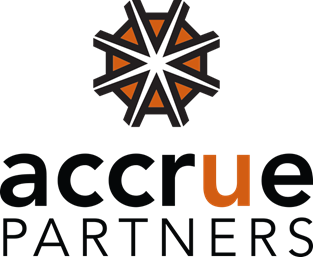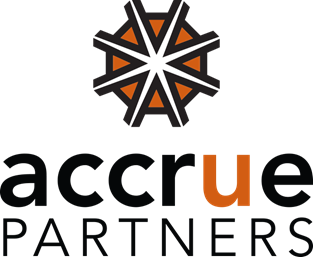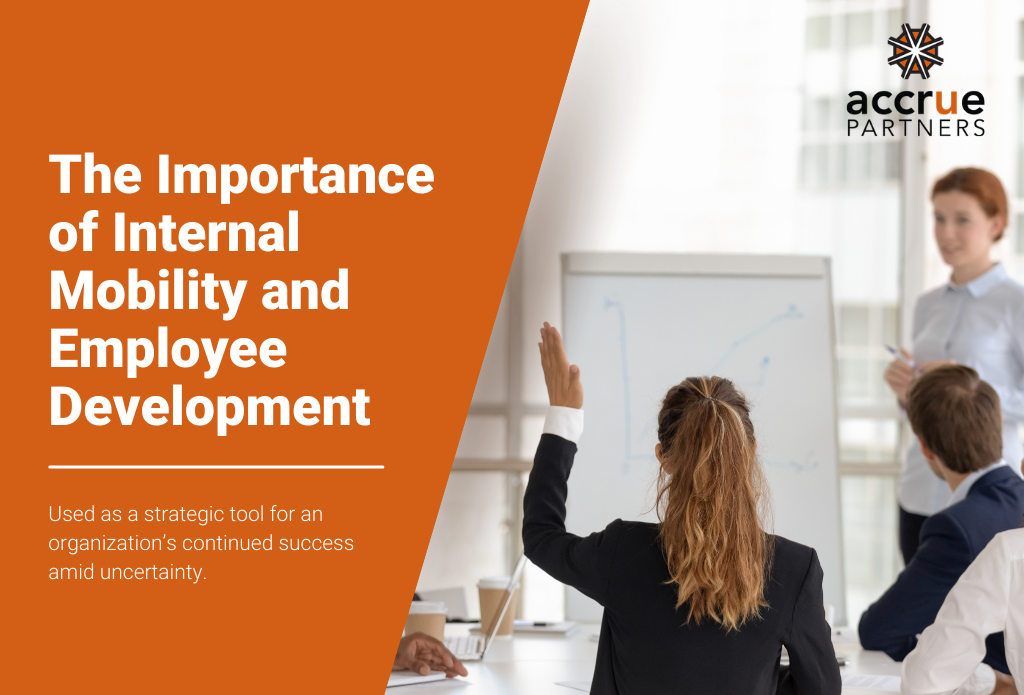The Importance of Internal Mobility and Employee Development
We have seen firsthand the impact COVID-19 has had on hiring. Whether you are a candidate looking to get back to work or a manager trying to expand your team, it’s been a different process from what we are all used to. One thing has been clear though, a new normal is starting to set in a normal where interviews are virtual, teams meet over zoom, a decrease in external recruiting, and an increase in internal mobility. Some trends that we are starting to see are increased importance on internal mobility and employee growth with a decrease in external recruiting. In a LinkedIn survey, 50% of respondents said that they expected their external recruiting budget to decrease. Employee learning and development budgets however will not decrease and will likely be increased according to 66% of those surveyed.
Internal mobility is the movement of employees within an organization, it could be vertical movements to higher-level roles or horizontal moving at the same job level. Employee growth and development go hand in hand with internal mobility focused on advancing the skill sets of current employees allowing them to take on more complex responsibilities and advance their careers. According to Forbes, SHRM, Harvard Business Review, and many other organizations, internal mobility and employee development is key to the success of a company and used as a strategic tool for an organization’s continued success. Not only does it increase employee retention and satisfaction it also serves to reduce turnover in a faster and more cost-effective hiring process.
Types of Employee Development
There are many different ways for a company to help their employees grow and develop. Whether it be cross-training employees, having mentoring programs, individual progression plans, sponsoring training programs and certifications, providing stretch assignments, or adding complexity to roles, the possibilities are endless. However, to be most effective, the development opportunities available should reflect what employees want as well as what the organization needs and be focused on succession planning.
Succession planning is a process of preparation focused on keeping talent in the pipeline that can mitigate the impact of sudden change within an organization. According to SHRM “…identifying crucial job skills, knowledge, social relationships, and organizational practices and passing them on to prepare the next generation of worker” is a practice that any organization could benefit from. It goes hand in hand with employee development and a proper succession plan should not only prepare for unexpected employee departure, but also promote growth, retention, and higher employee morale.
- Mentoring Programs- Have newer or more junior employees pair up with a mentor who can help them get to know the organization, their role, and teach new skillsets that the mentor has been able to gain with time in the organization.
- Stretch Assignments- These are meant to “stretch” employees developmentally by adding new projects or tasks that are outside the scope of their normal work. Many times there are employees who want more responsibility or to broaden the scope of their work and duties. While it may not make sense at the time to transition them to a new role or add a list of new responsibilities, these are a great way to develop their skillsets and get them ready for those next steps.
- Training Programs and Certifications- Bring in outside expertise! It never hurts to have a fresh perspective in your organization that can help to identify what your employees need and facilitate that training. Additionally, whether it be for IT, Marketing, HR, or Finance there are tons of certifications that you can sponsor your employees to get. This can further their career growth and benefit the company as well.
- Cross Training – Cross training enables employees to expand their skillsets and do the work of more than just one role and may include overlapping responsibilities with other positions. This is a great tool for succession planning as well as continued employee growth and can also be very beneficial when it comes to increased workflows.
There is no one size fits all option when it comes to employee development so be sure to do your research and figure out what best benefits your company and don’t forget to ask your employees what they feel would most benefit them.
What We Do at Accrue
Employee development programs and succession planning strategies can come in all shapes and sizes depending on your organization’s goal. Here at AccruePartners, we try to foster growth and development opportunities to ensure our employees are always learning, growing, and have the opportunity to advance.
For example, Cherelle Pinckney started as an RPO recruiter for EXOS when she first joined AccruePartners and has grown to become a successful Staffing Manager for our rapidly growing Marketing Division in only three years. She has made both vertical and lateral progressions throughout 3 lines of business at AccruePartners but has continued to excel at each new role. In her current position, she serves as a subject matter expert recruiting Digital, Marketing, and Creative professionals across mid-size and Fortune 500 clients, partnering directly with candidates and clients.
AccruePartners offers many different development opportunities for our internal staff including initiatives such as the Emerging Leaders Program, Jumpstart, individual coaching opportunities, off-site trainings exercises with experts, and more to allow continued organizational growth.
When asked about which growth opportunities Cherelle felt most benefited her, she highlighted our Emerging Leaders Program that gave her “Time to reflect on strengths and develop weaknesses, but also a great opportunity to bond with other leaders within the company and develop cross departmental relationships.”
Closing Thoughts About Why Employee Development is Important
Whether you are a leader in your organization or a candidate looking for your next job, employee development and succession planning is key. Candidates, be sure to ask about growth and development opportunities while interviewing, companies who have programs in place are typically ones you can truly excel with! And if you are a hiring manager or leader that is hiring on be sure to mention the growth opportunities you can provide for your employees. If your employees can grow with you they are more likely to be less tempted by new roles outside the organization. Employee development and proper succession planning benefits both the company and the employees and is truly a great way to keep everyone happy.


CONTACT US
1000 W. Morehead Street,
Suite 200, Charlotte, NC 28208
(704) 632-9955
Send info@accruepartners.com
FOLLOW US
© AccruePartners. All Rights Reserved.2023
CONTACT US
1000 W. Morehead Street,
Suite 200, Charlotte, NC 28208
(704) 632-9955
info@accruepartners.com
General
FOLLOW US






